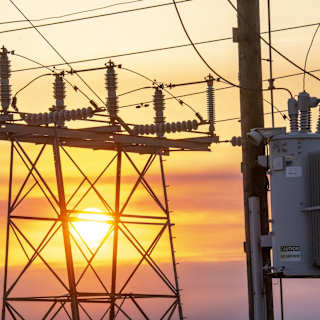- Grid Faces Capacity Crunch
- Coal Retirements Accelerating
- Policy Tensions Mount
The Department of Energy warned Monday that power outages across the United States could increase 100-fold by 2030 as utilities retire coal plants faster than they can replace them with reliable alternatives. The agency's new report finds that annual blackout hours could surge from single digits today to more than 800 hours per year without policy changes.
The analysis, released in response to President Trump's executive order on grid reliability, comes as electricity demand surges from artificial intelligence data centers and manufacturing facilities while 104 gigawatts of generating capacity faces retirement by decade's end.

The DOE report reveals that while 209 gigawatts of new generation is planned to replace retiring plants, only 22 gigawatts qualifies as firm baseload power that can run continuously12. The remaining additions consist largely of intermittent sources like wind and solar that cannot provide round-the-clock electricity.
"This report affirms what we already know: The United States cannot afford to continue down the unstable and dangerous path of energy subtraction previous leaders pursued, forcing the closure of baseload power sources like coal and natural gas," Energy Secretary Chris Wright said13.
The report specifically highlighted how overreliance on weather-dependent renewable sources has eroded grid stability, according to the Daily Caller3.
Electric utilities plan to retire 12.3 gigawatts of coal capacity in 2025, representing a 65% increase from the 7.5 gigawatts shuttered in 2024, according to the Energy Information Administration1. The 2024 total marked the lowest level of generation retirements since 20112.
Major closures this year include the 1,800-megawatt Intermountain Power Project in Utah and Michigan's 1,331-megawatt J.H. Campbell plant1. The Campbell facility received a temporary reprieve when Wright issued an emergency order in May requiring it to continue operating through August3.
Wright has also blocked the retirement of Pennsylvania's 760-megawatt Eddystone Generation Station, citing warnings from the North American Electric Reliability Corporation about summer grid risks43.
The Trump administration's approach contrasts sharply with utility companies' economic decisions. According to the Institute for Energy Economics and Financial Analysis, power companies have announced closures of 9,356 megawatts of coal capacity in 2025 based on economic factors and state regulatory oversight1.
The administration's efforts to prevent these closures represent "a legally questionable effort that would drive up electric bills without improving system reliability," IEEFA concluded1.
"If we are going to keep the lights on, win the AI race, and keep electricity prices from skyrocketing, the United States must unleash American energy," Wright said2.





